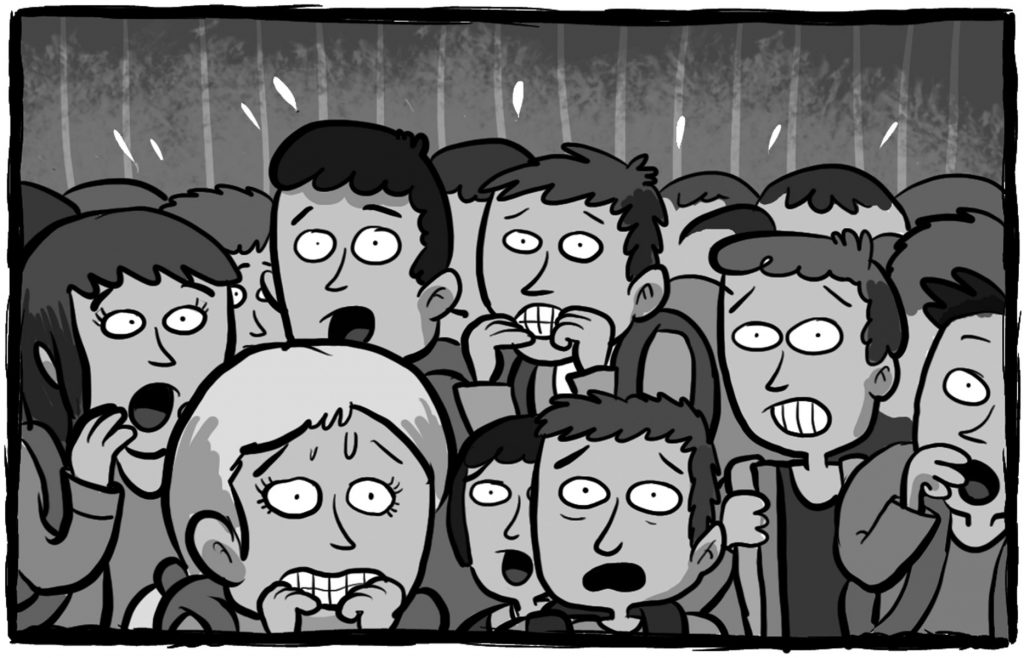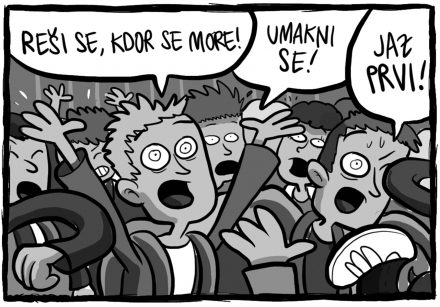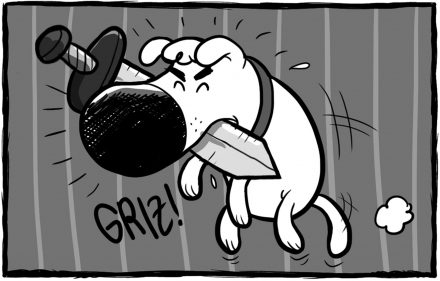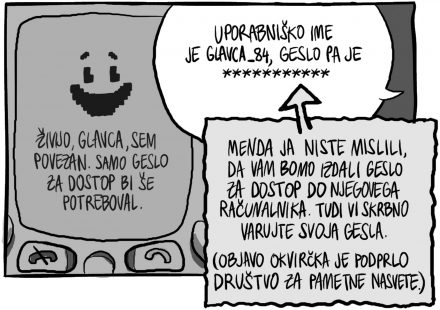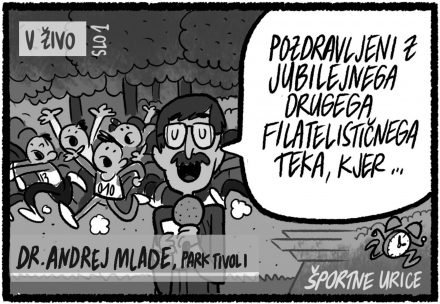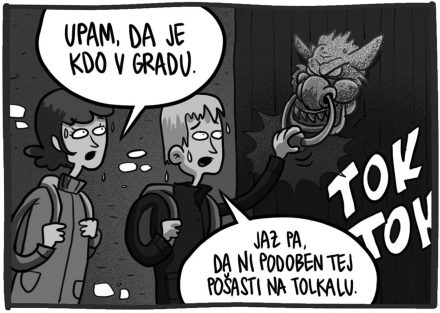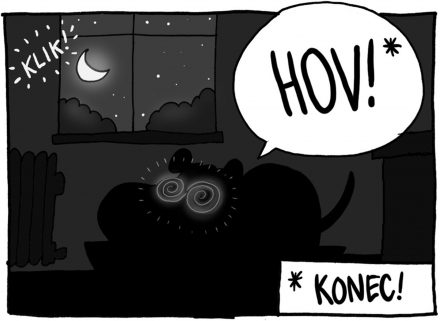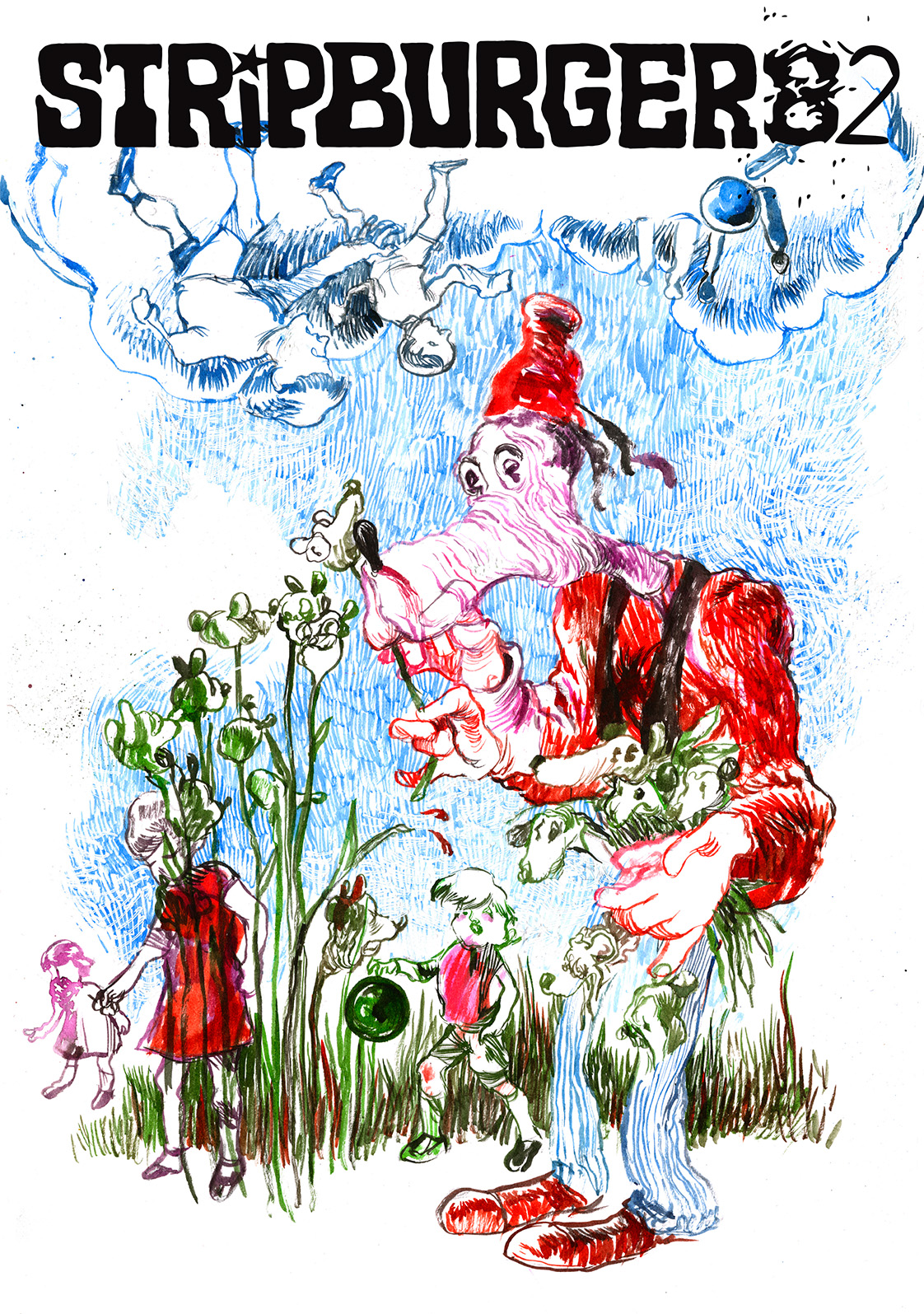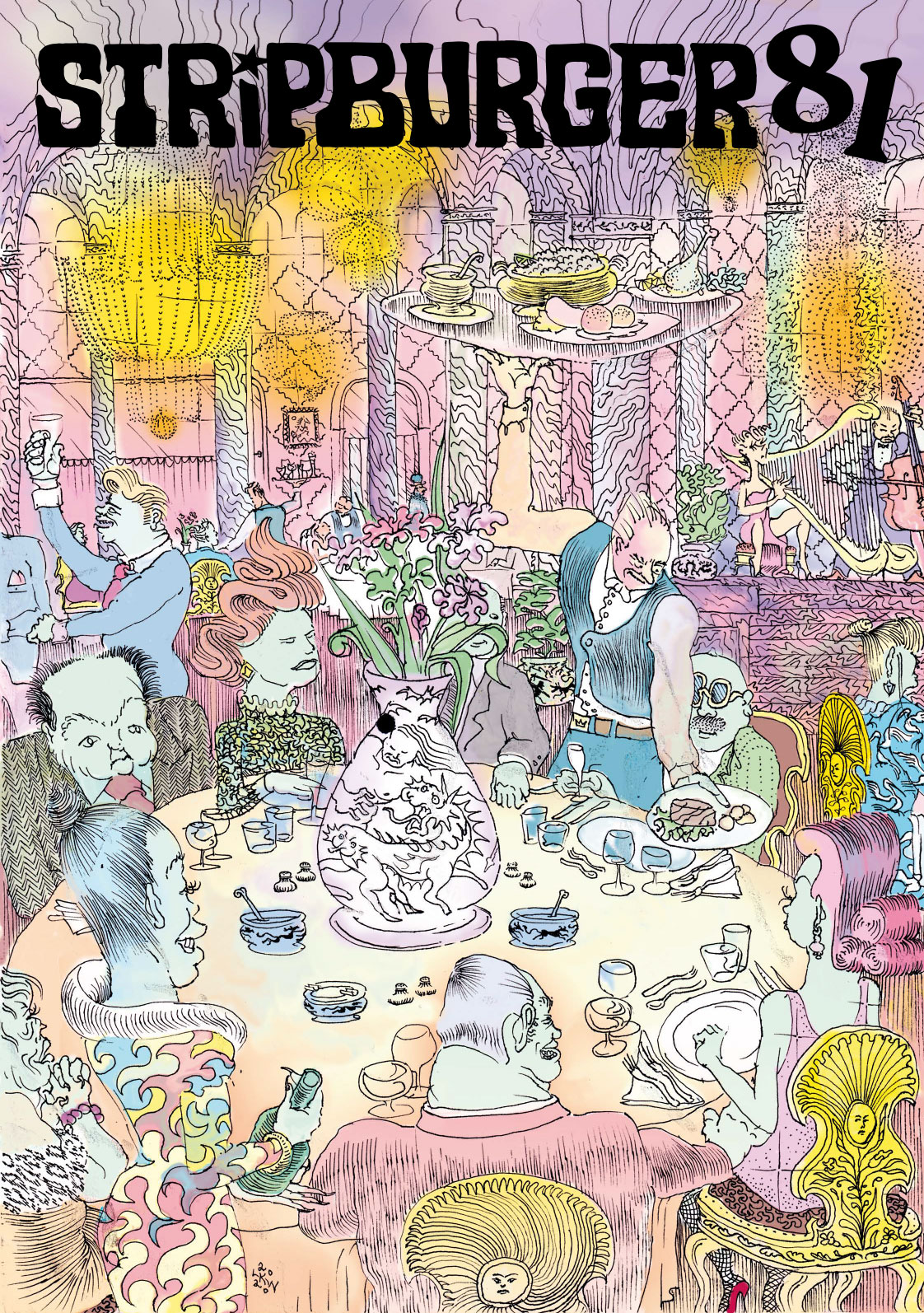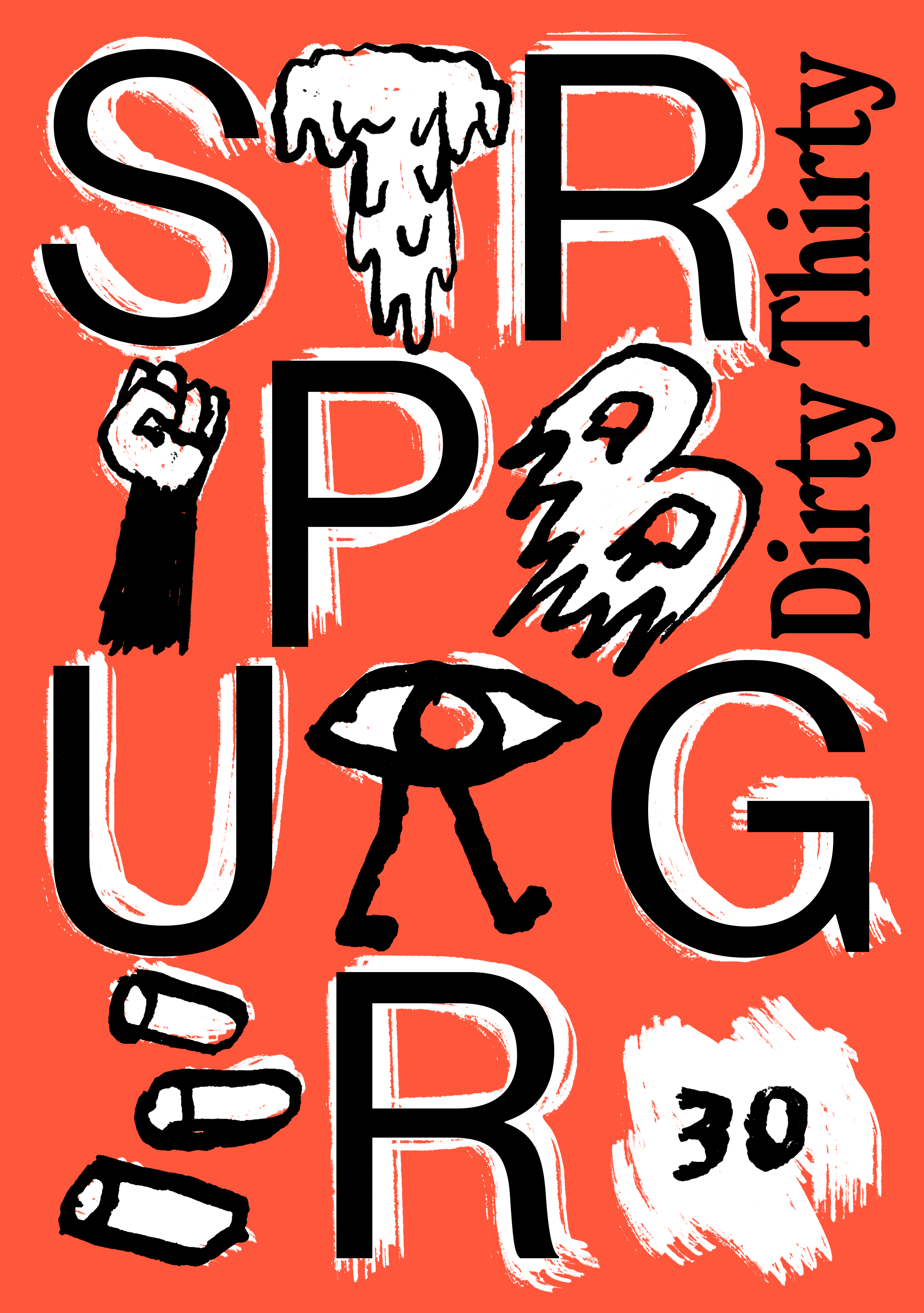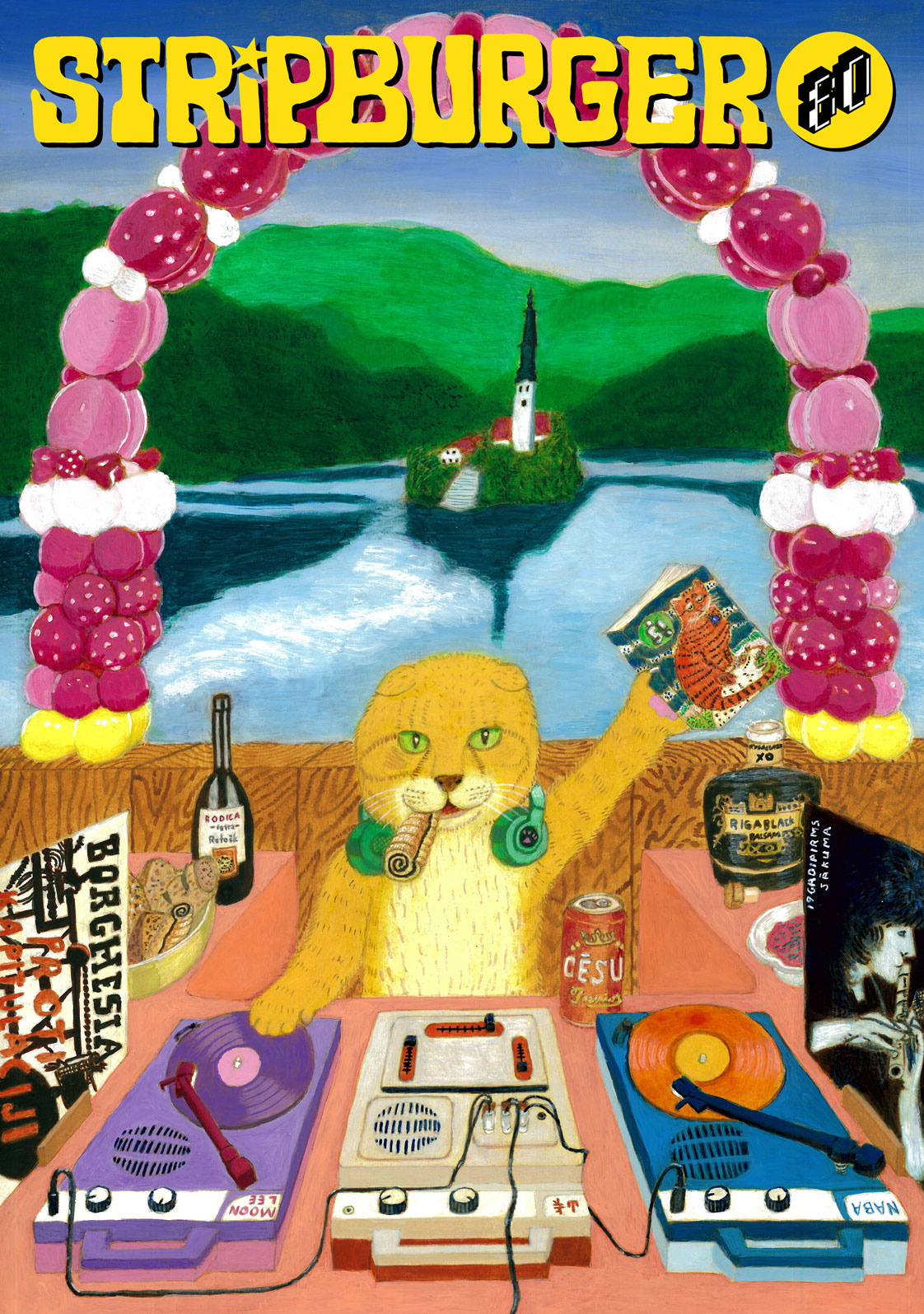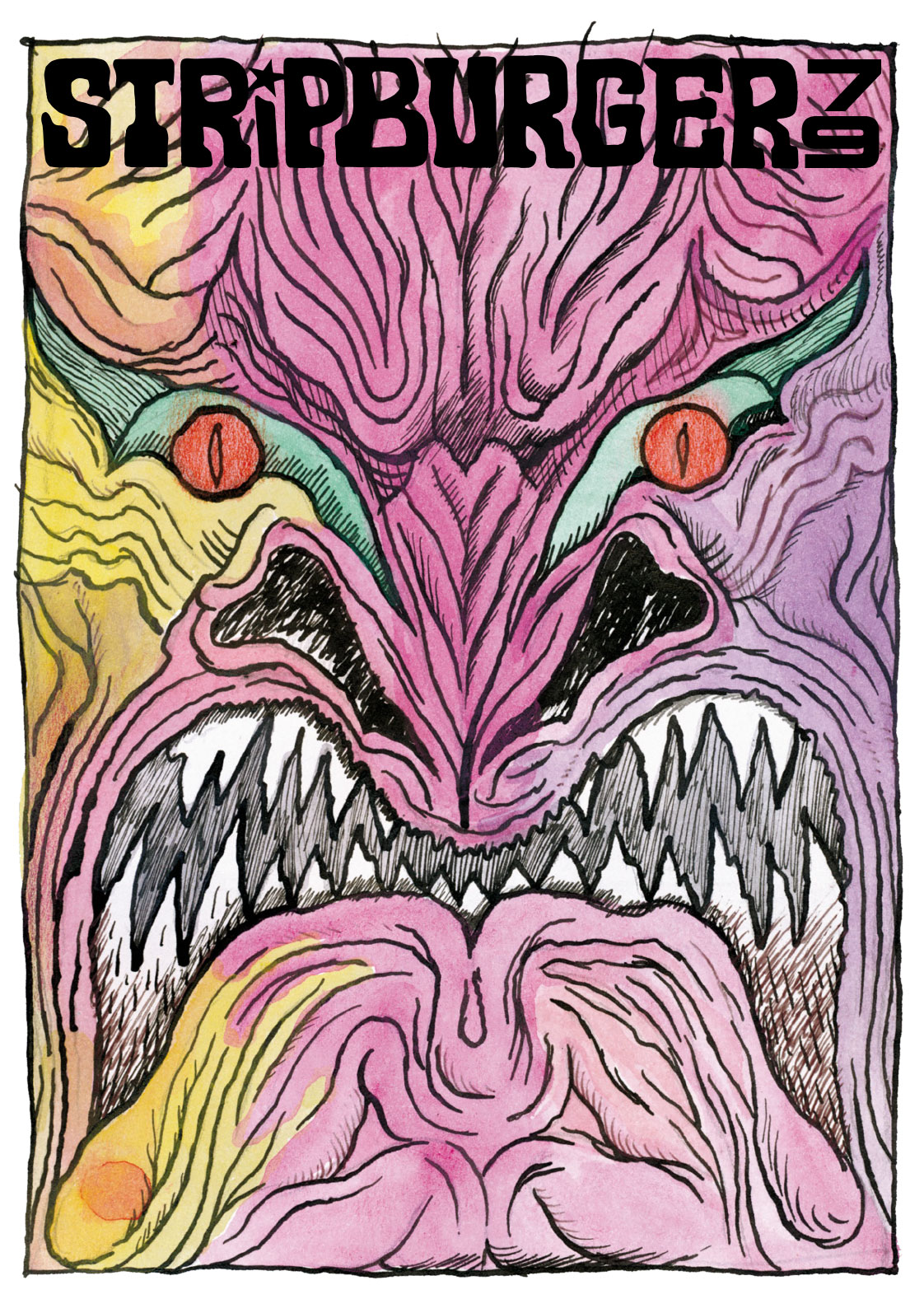Matej de Cecco & Boštjan Gorenc – Pižama (Slovenia) – interview, Stripburger 65, Maj 2015
Matej de Cecco and Boštjan Gorenc – Pižama, an artist and writer tandem that creates youth comics are a rare occurrence on the domestic comic scene. For the past seven years they have been bringing joy to PIL’s readers with their comics and their work was recently published in an album form for the second time. The first, a mini album, was published by us, while the second album was published in a hardback edition and includes three full humour-packed stories. You can read the review of ‘Šnofi’s gang’ in this issue of Stripburger, however we will focus on the making-of and behind-the-scenes of the most popular Slovenian youth comic at the moment.
The interview took place in the Kranj library during the comics event ‘Nepremagljivi dvojec brez krmarja, da o psu niti ne govorimo’ headed by Zoran Smiljanić. The discussion was polished by KR and DF.
‘Šnofi’s gang’ consists of Šnofi, the leader of the gang, two elementary school pupils – Pilko and Čopka, and Pepca, the curly dog, who also happens to be Šnofi’s love interest. How did you create the characters and start the series?
MdC: Pilko and Čopka were created by Damijan Stepančič for PIL magazine, where they originally appeared as illustrated characters, but the editors wanted them also in the comics format. At the time I was making comic strips for PIL magazine and I was invited to join the project. I immediately adopted the idea, but I didn’t want to take over any writing responsibilities. That’s how the collaboration between Boštjan and myself started.
BGP: Of course I accepted the invitation to write comics for PIL, for I grew up reading comics by Božo Kos. And you just don’t turn down an invitation by the magazine that published his comics, even if the fees are low.
How did you start making the comic?
BGP: I can explain a bit about its evolution. Pilko and Čopka were already created and set, and the reader could watch these characters grow throughout the first three years of the comic. I don’t mean growth in the sense of height or maturity, but in the sense of character development. One can also notice how Matej’s drawing developed through time.
MdC: I spent a lot of time developing the characters. They were much more detailed and cuter in the first drafts and that didn’t work, it didn’t even come close. The editors were concerned that the readers would fail to identify with them. Totally frustrated I made my last proposal with square heads, long arms and weird proportions, and it worked, I got the green light.
BGP: Indeed, it was impossible to work with the original attention to details. Over the years we managed to streamline our creative process. Now we can make sketches and drafts for two pages of comic in under an hour, while back then it took us several days.
So what does your creative process look like?
MdC: We both write down our ideas in our notebooks. The ones that make us both laugh are used in the comics. Boštjan writes the text while I sketch the scenes.
BGP: These sketches are usually close to the final result. Matej scans them and I write in the words. Matej then makes the comic from this draft. But he’s very involved in the making of the story, and sometimes I suggest a scene or two. It’s a joint effort.
‘Šnofi’s gang’ is also characterized by a relaxed and informal language.
BDP: The language needs to be standardized to a certain degree so that anyone can understand it, but I must say that we’re not against using colloquial words and the lower register. Personally, I prefer interjections and onomatopoeias that we come up with and that are not based on the sound itself, but are created by shortening the appropriate verb. For instance, a kick is pictured as a ‘kick’ and not as a ‘thud’.
One could say you’re didactic in this respect. These neologisms broaden the children’s vocabulary and improve their relationship with language.
MdC: That’s how we learned the language. I think it’s good to learn the language through comics. Younger readers might not understand each and every word, but they’ll manage to figure out the context. Maybe they’ll even pester their parents with questions like what does ‘nevertheless’ mean.
BGP: I’ve learned ‘pretipati obisti’* from Miki Muster. When Lakotnik** wanted to beat up someone, he always said he wanted to ‘pretipati’ his ‘obisti’.
Your comics are aimed at the young readers, but it seems that grown-ups also enjoy them.
BGP: I think that’s because Šnofi’s stories have two layers. There are hidden references that the kids don’t understand, but that appeal to the more mature readers. For example, one of the episodes features the Nova piratska banka (New Pirate Bank) that gambles away all of its assets and then stages a military coup in order to cover-up its incompetency. We both enjoy creating multi-layered stories.
MdC: We love using stuff that appears in the media.
BGP: On the other hand, we also love to be mischievous, just like Božo Kos used to be, and come up with witty remarks.
These are often attributed to one author or another. Like the one supposedly penned by the Doctrine Society of Slovenia, or by the Wise Advice Association.
BGP: We like to play with form and we don’t want to settle into a routine. We often allow ourselves tiny meta-textualities and sometimes we appear as commentators in our comics.
But you also pay great attention to details. In one of the episodes you went as far as creating a sports feature in a newscast with its own mascot: a jogging and jumpsuit-wearing clock.
MdC: There have been so many details that it is impossible to keep track. And when I rediscover them, I am surprised that I was bothered to take the time to come up with them.
BGP: Sometimes we decide to write a poem. You know, one that rhymes. Things like these are worth a little effort. It’s not like with Matej, where the right hand has no idea what the left one is up to …
MdC: Hey, I’m left-handed …
How do you draw?
MdC: In the first episodes I used pens, but I soon switched to digital drawing as my drawings in pen were no better than the digital ones. I think highly of traditional drawing techniques, but truth be said, time is of essence. In the beginning it took me almost a week to draw two pages by hand, but now I only need a day or two.
Are the stories thought out in advance or do they evolve spontaneously, right before the drawing?
MdC: Only one story was planned in advance, the rest emerged spontaneously.
BGP: It is good to receive a ‘kick in the ass’, and the constant pressure is good for motivation. We have no idea what we will be worrying about next month.
So you prefer to create as you go?
MdC: The planned approach allows you to finely tune things. If the story doesn’t work, you can change a scene or two and save the narrative.
When you draw as you go, you have to stick to what you have drawn. If your character loses an arm, the poor guy has to remain arm-less until the end of the story. You’re forced to work with what you’ve got and there is no backtracking. But we never lost sleep over this, we just go with the flow.
BGP: After the pre-planned story we realized that we didn’t see much of each other. We missed the constant joint effort and sparking ideas …
Maybe this is because things become uniform when you do them in a single sitting. I think you get greater depth when you find yourself in ‘real-time mode’. Of course, you also experience the adrenalin rush: a task is set and it needs to be performed. This is why we often choose a detail in the story that works as a joke and we use it as a benchmark: if we discover we are lost, we can always return to it. We plan the basic storyline in advance, but we allow ourselves the freedom not to use it if an unexpected path appears to be better. In the end we end up in the same destination anyway.
Do you have plans for anything else, or are you going to keep making ‘Šnofi’s gang’ for the next fifty years?
BGP: A minimum of fifty years, then we’ll pass the craft onto our children. We’re also constantly juggling with other ideas, but we’re too busy to realise them.
Is there a chance that Šnofi would appear as a zombie in your comics?
BGP: Not really. Firstly, the editor would reject the idea, and secondly, Šnofi is a character loved by the kids. When they send letters to the magazine, they always include greetings for Šnofi and they draw a bone especially for him. They even send photos of their dogs that they have named Šnofi. This is proof that the comic works and speaks to these young readers. Youth comic competitions, organized by PIL magazine, often include comics featuring Šnofi that are so funny you’ll find yourself rolling on the floor laughing.
Do you ever steal an idea from these children’s comics?
BGP: We would never do this. We prefer to steal children and sell them to married gay couples. What makes you think we can live off comics?
—————————————————————
*Untranslatable and rarely used idiom that means to beat up someone or to question them thoroughly. Literally: ‘to feel someone’s kidneys’.
** One of Muster’s popular characters.
SHORT BIOGRAPHIES
Matej de Cecco (1979, Kranj) has worked for Stripburger magazine as translator and editor. He has drawn comic strips for Pil Plus (youth magazine) from 2006 to 2008. He has been working as a co-author on ‘Šnofi’s Gang’ since 2008. He studied translation at University of Ljubljana and visual arts at A.V.A. Institute. His best known work are illustrations for Desa Muck’s book series ‘Totally serious’.
Boštjan Gorenc – Pižama (1977, Kranj) is a translator, stand-up comedian, editor, author, promotor of reading culture, actor, storyteller and improviser. He has been making young readers laugh with his witty translations of youth novels. He is a veteran of Slovenian stand-up scene. From 2011 till 2013 he hosted a radio show called ‘Naval Smeha’ on Val 202 (Slovenia’s national radio program). He is currently performing his solo comedy ’50 shades of fields’. He also performs as a rap artists.

